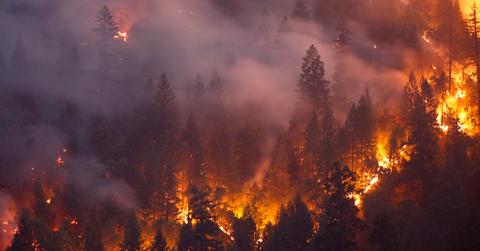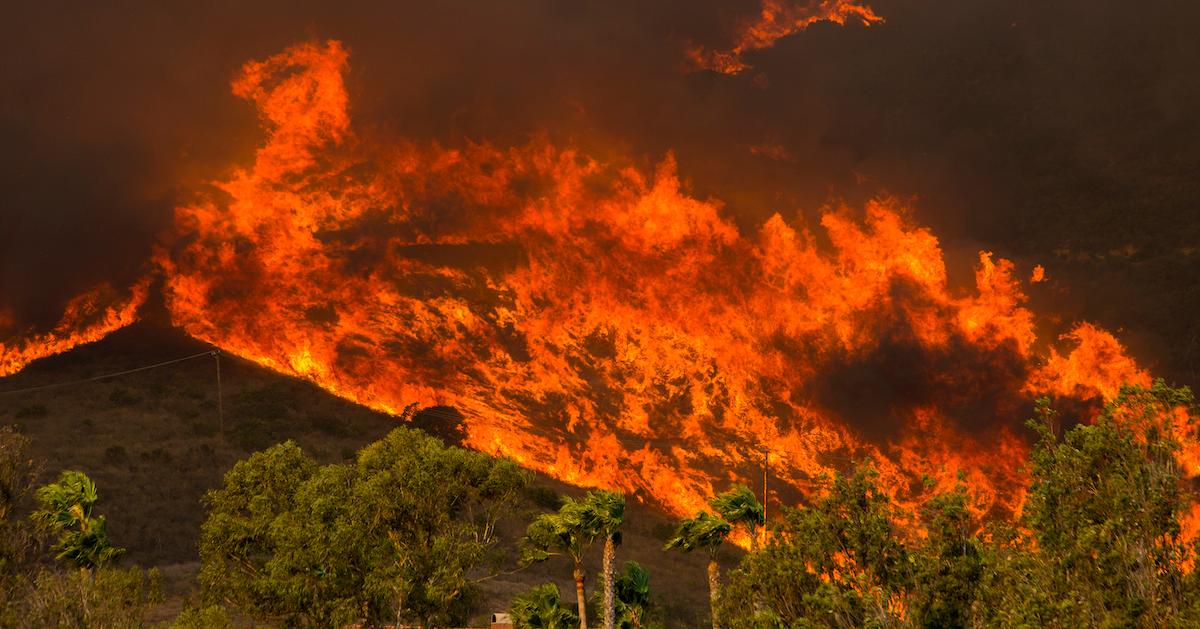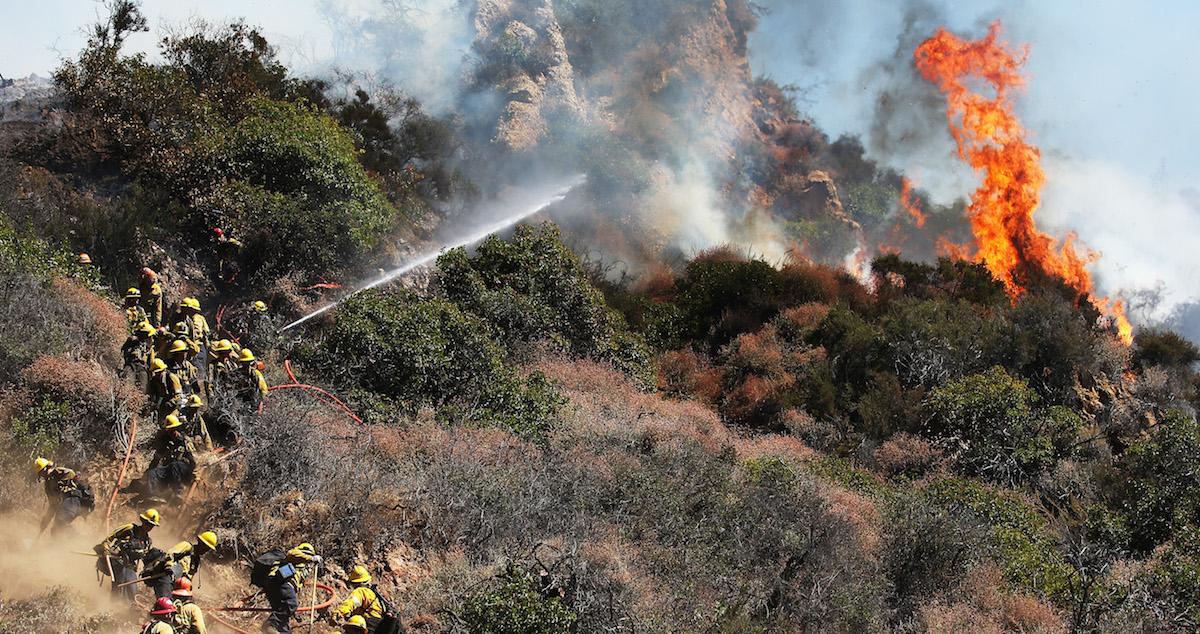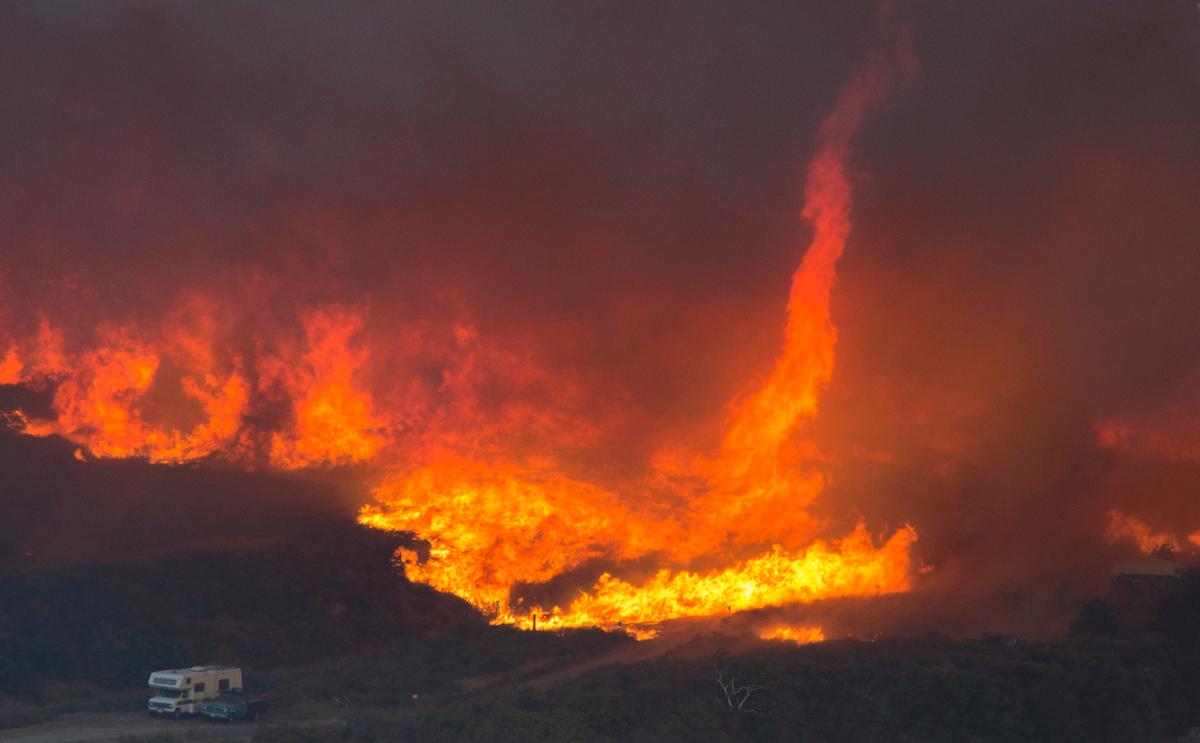Facts, Causes, and Worrying Trends Related to Wildfires
Published April 29 2021, 4:59 p.m. ET

Although wildfires are increasing in severity and frequency due to climate change, most people don’t understand a whole lot about them. Experts, however, devote time and effort to learn facts about wildfires, in order to determine how big a wildfire will be or how intense and destructive it might become. With that in mind, read on to find out more about wildfires, to better understand their patterns.
Wildfire facts:

The following facts about wildfires are used by experts to determine the severity, intensity, causation, and destructive capacity of wildfires.
How do wildfires start?
About 80 to 90 percent of wildfires are started by human beings, according to the National Parks Service. The EPA may label them a “natural disaster,” but that definition is a bit misapplied this day and age. In the past, lightning and meteors might have been the leading cause of forest fires, but ever since the first cave-person lost control of their bonfire, the blame has landed squarely upon us.

How are wildfires measured?
According to ScienceDirect, wildfires are measured in two metrics: fire intensity and fire severity. Fire intensity is defined as the amount of energy that is released by the fire. This could be the length of the fire’s flames or how fast it is spreading. It also measures the rate of heat transfer per unit of length of the fire line. This is represented by the radiant release of energy, and determines how the fire might propagate and how difficult it is going to be to stop.
Understanding these elements of wildfires allows firefighters and scientists to extrapolate the best methods to extinguish the fire. They can determine the proper prevention methods to implement and inform on the suppression tactics that will need to be used to put the fire out.
Fire severity, on the other hand, is more attuned to the impact the fire has on the ecosystem. For example, it looks at how many trees or animals died in the blaze. Fire severity is less about how to stop the fire and more about what to do after the fire has been stopped. That said, an understanding of the affected ecosystem, the animals, plants, and water sources could be used to drive the fire to places where it can do less damage.
An understanding of fire severity can also determine how and why the fire started in the first place. There may have been conditions present that allowed for the fire to gain such a foothold, for instance. Thus, knowing a wildfire’s severity may allow informed assessments to be made in the future.

How are wildfires evaluated?
When a wildfire first ignites, the National Parks Service is often called in to assess the situation. They generally start by asking two very important questions: Does the wildfire threaten people and/or their personal property and where is the wildlife located? Knowing these two factors will determine the best course to combat the fire.
They also represent a degree of risk management on the part of park rangers, politicians, police, emergency workers, and firefighters. Knowing the desirable and undesirable effects of a wildfire could make for better planning all around. With these elements in mind, evacuations can be initiated and necessary equipment can be brought in.
However, certain conditions of wildfires will impact the ultimate course of action. For example, if a fire is started as a result of lightning and if it's in a national park or a place uninhabited by humans, the choice may be to allow the fire to run its course. In some cases, these types of natural wildfires have proven more beneficial to the ecosystem than disastrous.